When using a box trap to capture beasts, it is essential to entice them with bait to enter the trap. Different types of beasts have different tastes, so it is necessary to select bait according to the target and devise ways to scatter the bait.
About feeding
The appearance of the box trap is clearly an artificial object, and since it is set up in a state where the beast can see it completely, the beast will be on guard immediately after setting it. Without bait to lure them in, the beast will not approach them at all. From the beast's point of view, there is nothing but fear and vigilance against the box trap that suddenly appears. Therefore, it is necessary to use food to appeal to the instinct of appetite and relieve their vigilance.
The important thing here is to make the beast recognize that the box trap is a safe and secure feeding ground. If you patiently sprinkle bait while the trap is not working (the door does not fall down), even highly wary animals will gradually lose their vigilance and come closer to the trap (also known as "break-in").
When breaking in, spread the bait over a wide area, centering on box traps. Sprinkle bait a little away from the box trap position, and when it starts to bite continuously, gradually reduce the amount of bait further away and guide it closer to the box trap.
As you can clearly see by observing the set box traps with a trail camera , there are individuals that require little break-in, and do not try to enter the trap easily, and even if they do enter, they will quickly escape after picking up food in a shallow position. There are individuals. In addition, juveniles that have not learned about box traps and young animals with strong curiosity are more likely to enter the trap.
Even among humans, there are people with different personalities, such as those who are cautious and those who are easy to let their guard down, but it is the same with animals. The strength of vigilance varies depending on the type and individual of the beast.
boar
Wild boars are more cautious than other animals, and there are many cases where they are reluctant to enter inside box traps. In some cases, you can catch it immediately after setting it up, but in other cases, it takes several months to get used to it.
feeding wild boar
In the case of wild boars, mothers and cubs often move together. At the point of break-in, the cubs will soon enter the trap, but it is often the case that the mother is wary and does not try to enter the box trap. If you activate the box trap without trying to enter the back of the trap, you will miss it. Wild boars that have learned by watching an individual that has escaped or a mate caught in a box trap will not approach the box trap even if they scatter bait.
The first stage is until the boar reaches the door of the box trap, and the second stage is until it enters the back of the trap. If the target does not try to enter the trap even after clearing the first stage, continue feeding patiently and try to make it easier for the animal to enter the trap (for example, the deeper the trap, the more food you need to feed). Sprinkle a lot of bait, and sprinkle less bait in front, etc.).
The important thing is to observe the beast's tracks as much as possible, read its psychological state, and not be impatient until you can go deep inside. *It is recommended that you use a trail camera to photograph the area around the box trap and observe the animal's movements. There are many hints in the trail camera footage as to why you are not caught in a box trap.
In the case of Kukuri Trap , it is set in a state where it is hidden from the beast in the first place, so it is a cardinal rule to avoid leaving traces of humans as much as possible, but in the case of box traps, traces of humans are clearly visible in the first place. By continuously throwing food every day, we will change the perception that “humans are scary” to “humans = food”. After the beast's vigilance wears off and it is safe to eat the bait in the back of the box trap, set the box trap to activate (the door will drop) and aim for a single round.
type of bait
When attracting wild boars to the target, it varies slightly depending on the region and people, but the most basic is rice bran. It has the advantage of being highly effective at attracting, relatively easy to obtain, and easy to work with a shovel because it is in powder form.
*Rice bran is easily washed away by rain, and when it gets wet, it is easy for mold to grow, so it is a good idea to cover the ceiling with a sheet to keep the rice bran scattered inside the trap from getting wet. The old rice bran is cleaned once every few days and replaced with a new one.
In addition, we mix in old rice, waste rice, potatoes and vegetables while observing how the fish bite. When mixing, it is convenient to use a plastic fune (toro boat).
deer
Deer use rice bran and old rice just like wild boar, but if you target only deer, use alfalfa (dried grass) or hay cubes (hardened hay such as alfalfa).
Deer like salt, so mineral salt or soy sauce may be used to lure them. Recently, deer-only attractants containing iron, which deer love, are also on the market.
Raccoon dog, badger, raccoon, etc.
These beasts are smaller than wild boars and deer, so use smaller box traps. Because they are omnivorous, they often use cheap and oily foods such as ham, sausage, peanuts, snacks, fried bread, and dog food. Chickens are often caught, but non-target animals (such as weasels and martens) may be accidentally caught.
palm civet
I like fruit trees, so I use ripe fruits (persimmons, bananas, etc.). The box trap used is the same size as raccoons and raccoons. *Our company offers two types of box traps: a handy folding version and a robust specification version . We recommend the folding version for those who want to set up box traps easily, and the robust version for those who are looking for something that can be used over and over again.
Let's use different feeding methods and box traps for each animal
Since each animal has different physical characteristics and favorite foods, it is necessary to change the bait and box traps used for each target animal. For large targets, use a large box trap, but if the box trap is too large for the target, it will escape through the gaps in the mesh.
Another common case is when you think the feeding was successful, but it turns out that a different kind of animal was actually eating the food. It is essential to check thoroughly.
In the case of wild boars in particular, there are times when they can eat only the bait that is far away from the box trap. something that can't be caught. With patience and continuation, you will gradually lose your vigilance.

 箱罠
箱罠
 くくり罠
くくり罠
 パーツ類
パーツ類
 電気柵
電気柵
 自作キット
自作キット
 防獣グッズ
防獣グッズ
 監視カメラ
監視カメラ

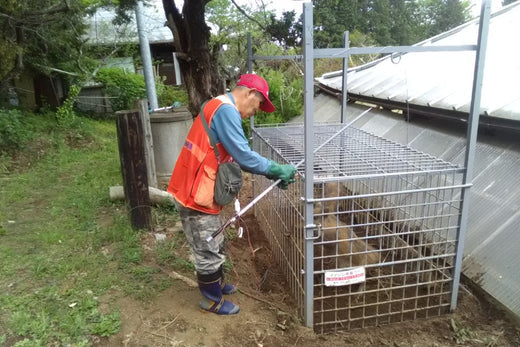
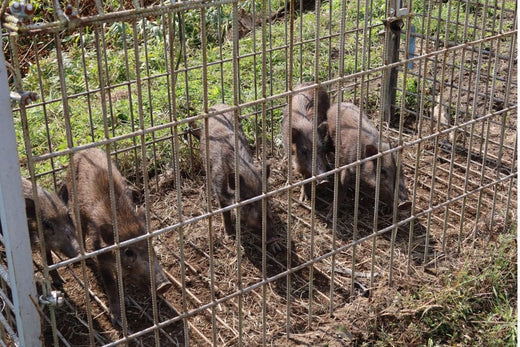
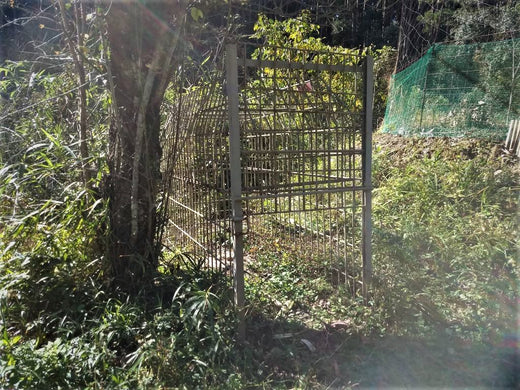
![Fare Asahi Shiki Box Trap Big Size [Double Door]](http://inohoi.jp/cdn/shop/products/20180504_5c53af_300x300_crop_center.progressive.jpg?v=1597991101)
![Fare Asahishiki box trap medium size [single door] wire mesh specification](http://inohoi.jp/cdn/shop/files/main_300x300_crop_center.progressive.png.jpg?v=1720764665)
![Fare Asahi Shiki Box Trap Big Size [Single Door]](http://inohoi.jp/cdn/shop/products/20180506_c693cd_e969a0f5-abac-49ee-8f2b-6de0f385e3fd_300x300_crop_center.progressive.jpg?v=1597991123)
![Fare Asahi Shiki Box Trap Medium Size [Single Door] Deep Type](http://inohoi.jp/cdn/shop/files/f9d83dbb4ed93f76265b8cd23c07b474_300x300_crop_center.progressive.jpg?v=1726117508)
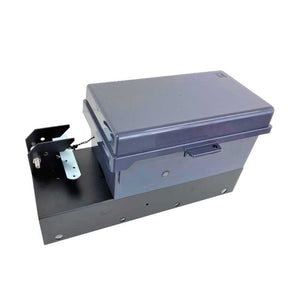
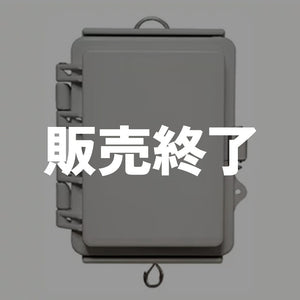
![Fare Asahi Shiki Enclosure Trap Big Size for Wild Boars and Deer [Double Doors]](http://inohoi.jp/cdn/shop/products/20180513_cc4969_300x300_crop_center.progressive.jpg?v=1597991336)
![Fare Asahi Shiki Boar and Deer Enclosure Trap Big Size [Single Door]](http://inohoi.jp/cdn/shop/products/20180609_0e5c80_300x300_crop_center.progressive.jpg?v=1597991633)
![Fare Asahi Shiki Monkey Box Trap [Single Door]](http://inohoi.jp/cdn/shop/products/2021-07-21T093626.944_300x300_crop_center.progressive.jpg?v=1628140528)
![Fare Asahi Shiki Small Animal Box Trap Small Size [Single Door]](http://inohoi.jp/cdn/shop/files/asahi-small02_071bc964-fa6b-4587-ae52-d15e905cc2c7_300x300_crop_center.progressive.png.jpg?v=1727766085)
 box trap
box trap
 tying trap
tying trap
 enclosure trap
enclosure trap
 Prevention and avoidance goods
Prevention and avoidance goods
 electric fence
electric fence
 trap surveillance camera
trap surveillance camera
 transportation goods
transportation goods
 Trap detection sensor
Trap detection sensor
 hunting supplies
hunting supplies
 hunting books
hunting books
 Anti-bird goods
Anti-bird goods
 Agricultural materials/machinery
Agricultural materials/machinery
 boar
boar
 deer
deer
 Kyon
Kyon
 monkey
monkey
 raccoon
raccoon
 Badger
Badger
 palm civet
palm civet
 raccoon dog
raccoon dog
 nutria
nutria
 mouse or rat
mouse or rat
 Mole
Mole
 bear
bear
 pigeon
pigeon
 Crow
Crow







